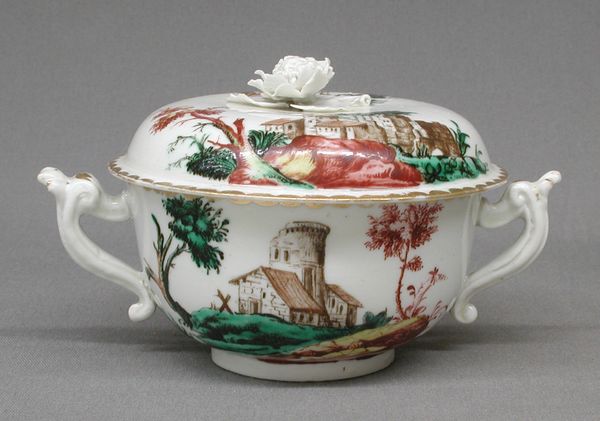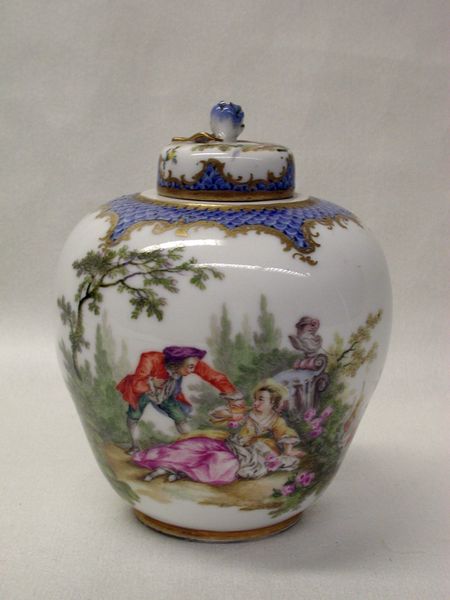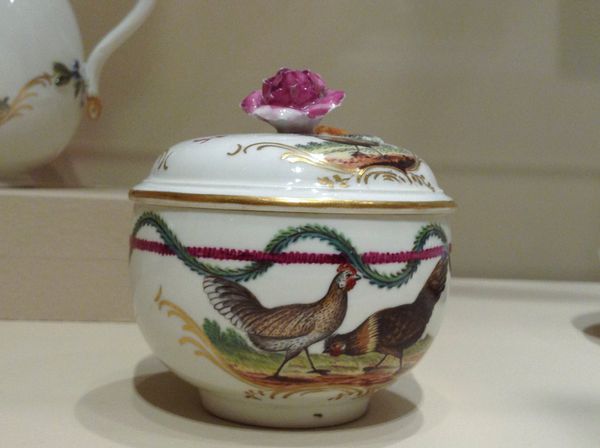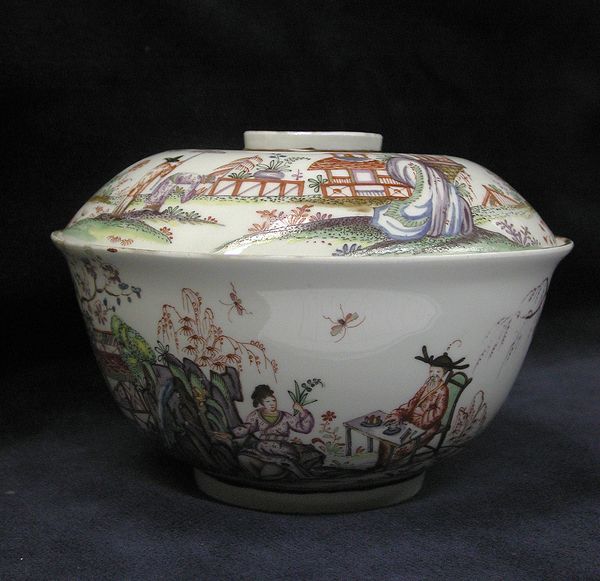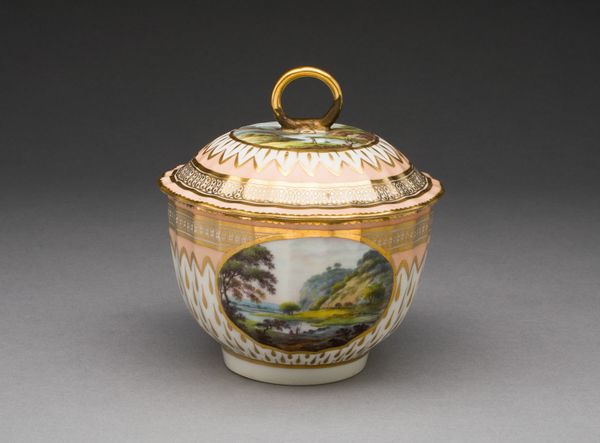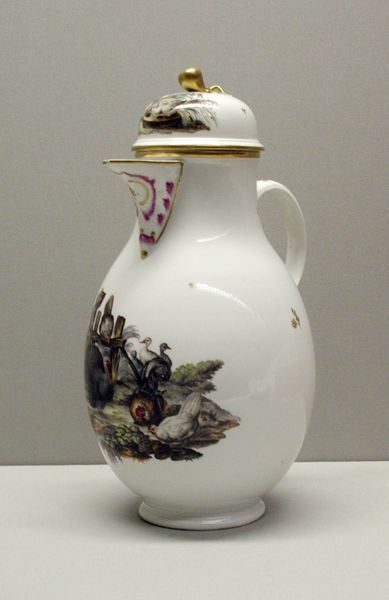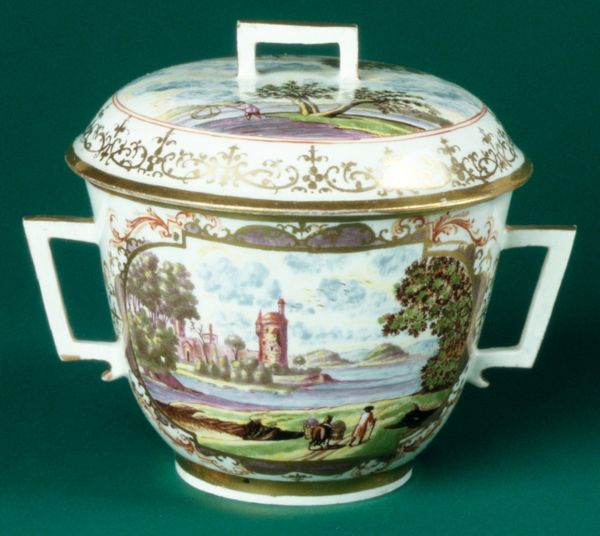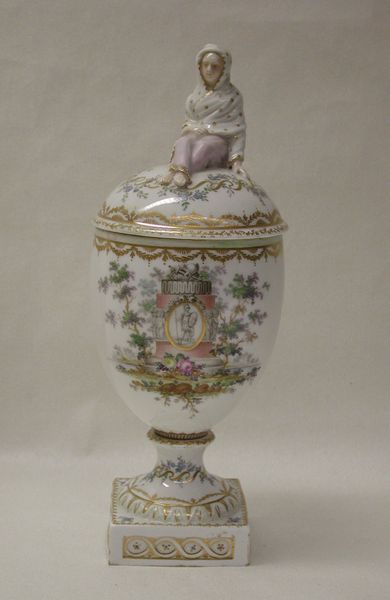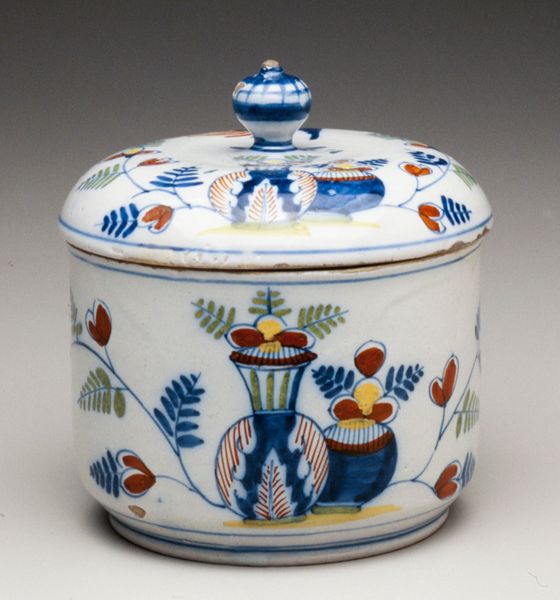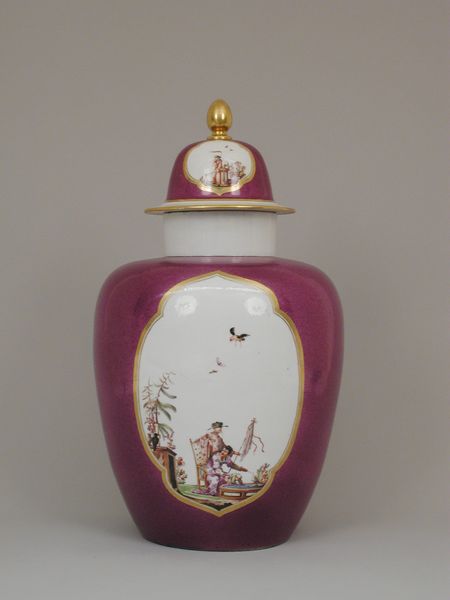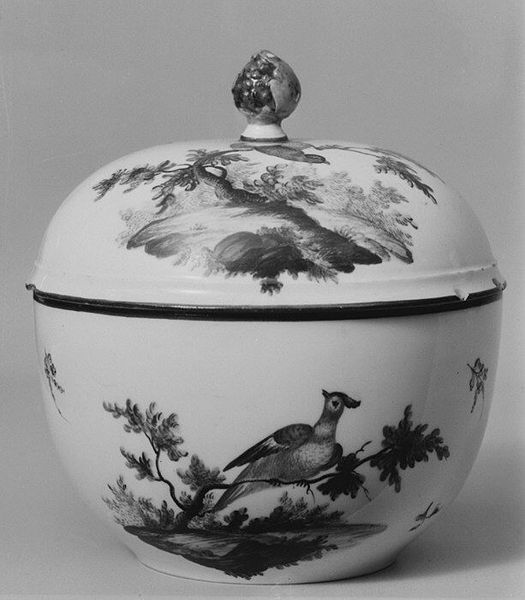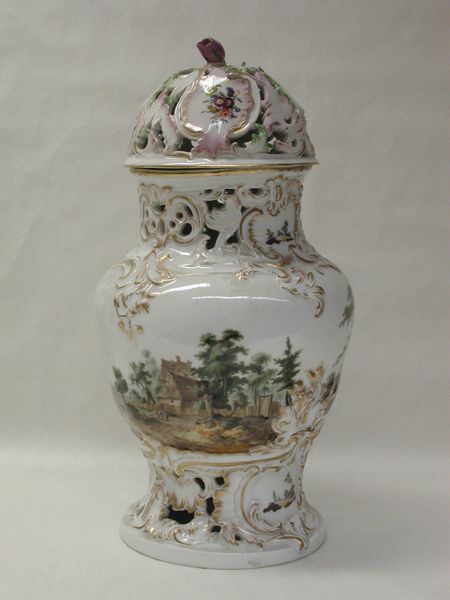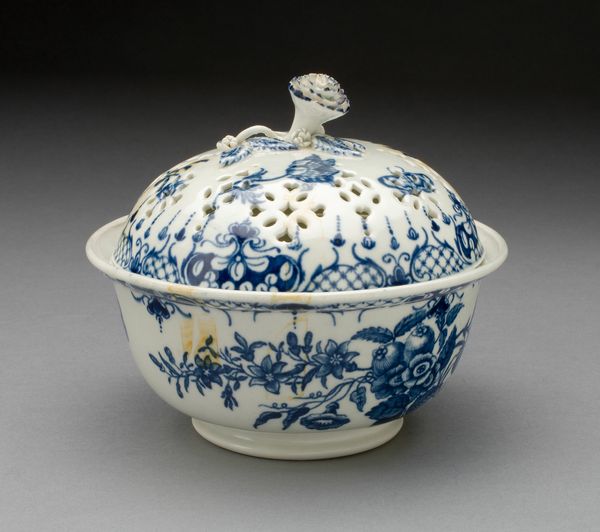
Dimensions: Overall (bowl .5a, confirmed): 2 3/4 × 4 1/4 × 4 1/4 in. (7 × 10.8 × 10.8 cm); Overall (lid .5b, confirmed): 1 1/2 × 4 3/8 × 4 3/8 in. (3.8 × 11.1 × 11.1 cm)
Copyright: Public Domain
Curator: Before us is a porcelain sugar bowl created by the Höchst Manufactory between 1770 and 1780, now residing here at the Metropolitan Museum of Art. Editor: It’s remarkably charming. There's an almost ethereal lightness to it, and I'm drawn to the delicate brushwork depicting the waterfowl. Curator: These details offer insight into the aesthetic preferences and social hierarchies of the time. Pieces like this were commissioned by wealthy patrons, and the landscapes represent the landed aristocracy. Editor: Precisely. The choice of Rococo styling further emphasizes the intended audience; it's frivolous, playful, a symbol of aristocratic tastes, not utility. The white backdrop throws focus to the coloration of the landscape art and the gilded rim of the bowl. Curator: And we have to also look at the context of the landscape, and its relationship with nature. How landscapes were being modified and consumed for elite pleasures; hunting, fishing, estates and garden landscaping. It emphasizes control over natural resources and how that plays into power dynamics. Editor: Yes, and technically, consider how porcelain provided a uniquely suited smooth surface to give depth and dimension to the painterly imagery, contrasting it beautifully with the rich color of the metal bands around the top and bottom of the piece. Curator: These objects also show a fascination with pastoral life amid urbanization; and of course, sugar itself speaks to global trade, the commodification of labor, and colonial exploitation. It's a decorative object, but its presence reveals deeper, systemic inequalities. Editor: While acknowledging those complexities, the sugar bowl still possesses an undeniable visual grace through its curvature, rendering a captivating representation of Rococo style. I appreciate how its craftsmanship embodies form and elegance. Curator: Considering both its form and significance helps us unpack the layered messages encoded within seemingly simple art objects. Thank you for offering your thoughts. Editor: Indeed. The analysis, as always, revealed new aspects, prompting me to consider the function alongside beauty.
Comments
No comments
Be the first to comment and join the conversation on the ultimate creative platform.
